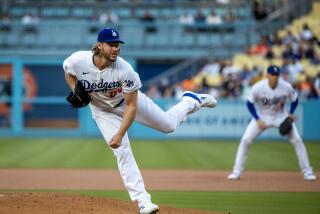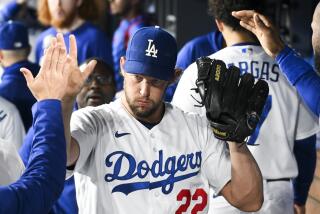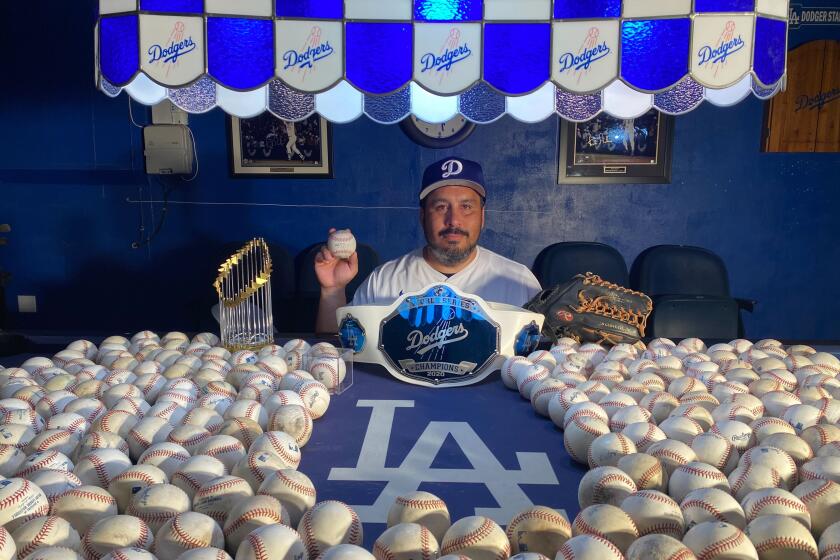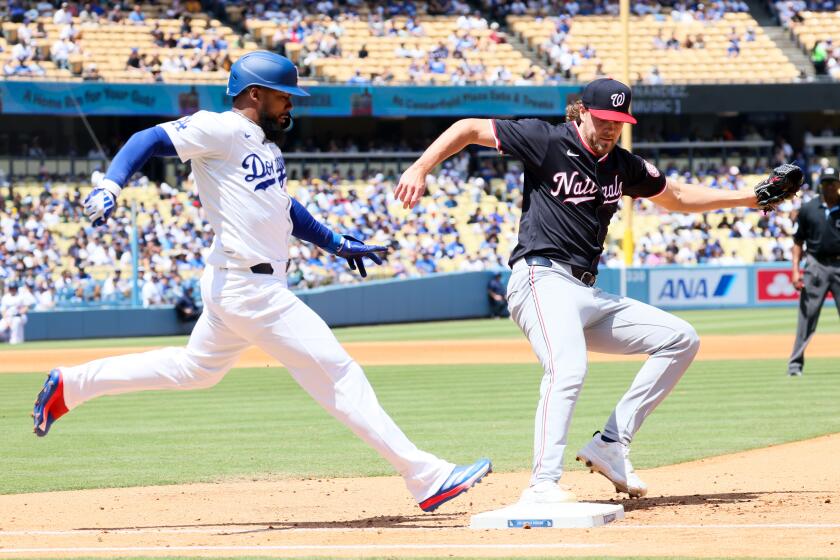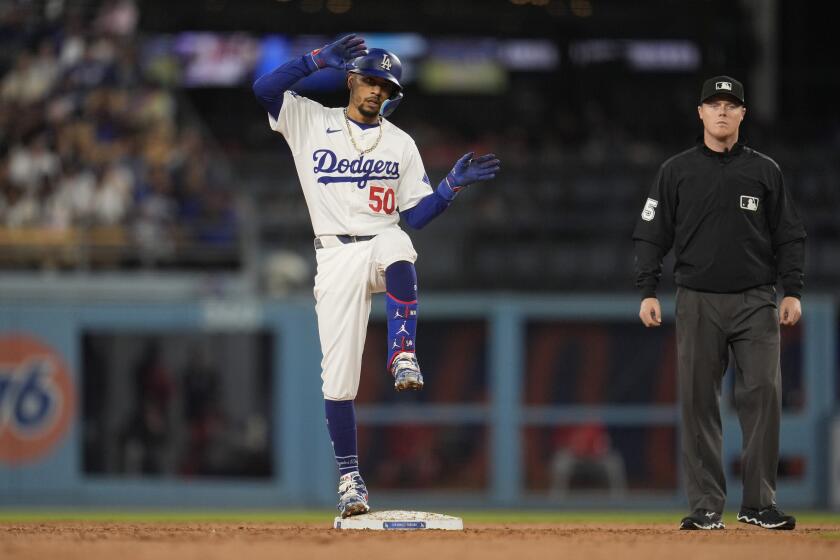Dodgers ace Clayton Kershaw tweaks strategy on the mound
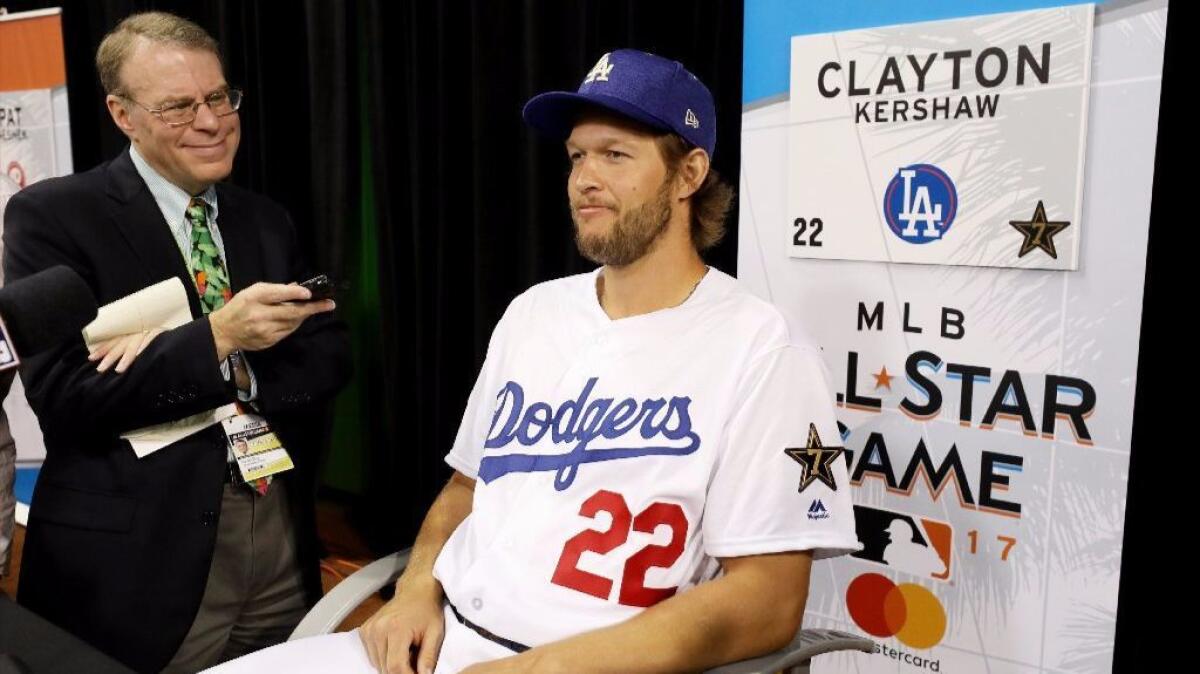
Seven days removed from his final start of the first half, Clayton Kershaw climbed down a set of steps inside the visitors clubhouse at Marlins Park in Miami on Sunday morning. His destination was the dugout, not the mound. He wore a headband, not his Dodgers cap. He would wait until Tuesday to pitch again.
“I’m bored,” he said, jokingly. “It’s been a while.”
After an eventful first half, in which Kershaw gave up a career-high number of homers and still maintained his status among the game’s elites, the Dodgers afforded Kershaw nine days of rest, which included the All-Star break. He will take the ball against the Chicago White Sox in the midst of his finest stretch of pitching in 2017, having tweaked his strategy to stay ahead of hitters.
In the first half of the season, Kershaw won more games (14), threw more innings (132 1/3) and faced more batters (506) than any other pitcher. He ranked second in earned-run average (2.18), second in strikeout-to-walk ratio (7.23) and second in walks and hits allowed per inning pitched (0.88) among National League starters who qualified for the ERA title heading into Monday’s games. In his last four starts, he struck out 44 batters in 29 innings, collected four victories and posted a 0.67 ERA. He logged his first complete game of the season in the first-half finale against Kansas City.
“The thing that just makes him so special is his attitude, his intent to go out there and dominate,” manager Dave Roberts said. “That hasn’t changed.”
But Kershaw’s approach to facing hitters has, subtly, as he adapts to a sport-wide surge in power. Hitters are on pace to hit more home runs this season than ever. Kershaw got caught in that wave in the first half — “disproportionately so,” in the eyes of general manager Farhan Zaidi.
Before 2017, Kershaw had never given up more than 16 homers in a season. He has given up 18 in 19 starts.
He approached a nadir June 19. The New York Mets hit four home runs against him. Furious at his vulnerability, Kershaw kicked the dugout bench in Dodger Stadium after he exited the game. He was trapped in a five-start skid in which he surrendered 10 homers.
Kershaw shrugged off some of the fusillade. He prides himself on limiting damage, and of those 18 homers, 12 were solo shots and the rest counted for two runs each. Yet, he acknowledged the depth of the problem as he regrouped after facing the Mets.
As he huddled with pitching coach Rick Honeycutt, Kershaw focused on the predictability of his patterns to attack hitters. He described himself as being “more open-minded” to suggestion and undergoing a “little bit of a mind-set shift, for me, just rethinking a few things.” The differences were slight. Kershaw sharpened the command of his curveball and slider, and increased their usage. He also varied the deployment of his fastball.
In his first 15 starts, Kershaw leaned on his fastball 49.2% of the time, according to Pitch f/x data from Brooks Baseball. In his next four outings, Kershaw reduced his fastball usage to 43.2%. He filled the void with offspeed pitches, and showed a willingness to break out his curveball earlier in games.
“It’s no secret that I want to throw fastballs and get ahead, and work from there,” Kershaw said. “And it’s no secret that guys are swinging early. Sometimes you have to deviate from that. And it might take a few homers to realize that.”
Kershaw often pounds his fastball inside to right-handed hitters so he can set up the slider aimed at the batter’s back foot. The combination is malignant when effective. But it is also foreseeable.
Honeycutt noted one issue with Kershaw’s fastball. He threw too many strikes with it. His control prevented walks, but it also offered opportunities to opponents.
“His command has gotten so good,” Honeycutt said. “He throws the breaking ball out of the zone, but he doesn’t really take his fastball out of the zone on purpose. That’s the part where you try to just throw in there, when the time is right.”
On June 19 against Colorado, five days after his start against the Mets, Kershaw escaped from a bases-loaded jam in the first inning to log six scoreless frames. He showed a willingness to try his curveball earlier in counts and to spot his fastball out of the zone.
Five days later, facing the Angels, Kershaw picked up strikes in the first inning when Cameron Maybin and Albert Pujols fouled off fastballs that missed inside. He struck out both with sliders, rolling to a 12-strikeout performance.
For the most part, Kershaw looks like Kershaw. There is little obvious significance in seeing him strike out Arizona first baseman Paul Goldschmidt with a first-inning curve, as he did July 4, or expand the strike zone with an elevated 94-mph fastball to strike out Kansas City outfielder Lorenzo Cain, as he did July 9. But the adjustments have kept Kershaw in control.
Honeycutt credited Kershaw for continuing a process of adaptation that started around 2015, as the three-time Cy Young Award-winner’s arsenal became well-known around the game.
“He’s a smart man,” Honeycutt said. “He looks at it, and he sees it.” He added, “You just don’t want to get where you’re giving them any advantage at all.”
Twitter: @McCulloughTimes
More to Read
Are you a true-blue fan?
Get our Dodgers Dugout newsletter for insights, news and much more.
You may occasionally receive promotional content from the Los Angeles Times.
